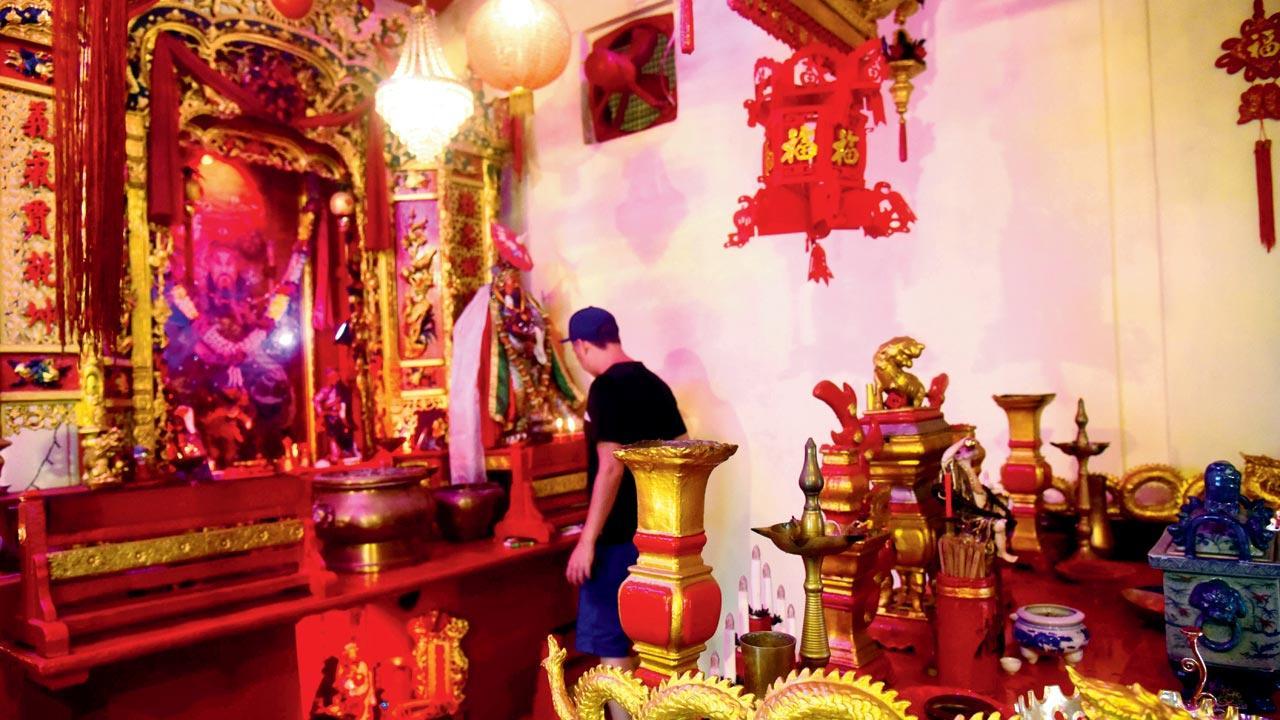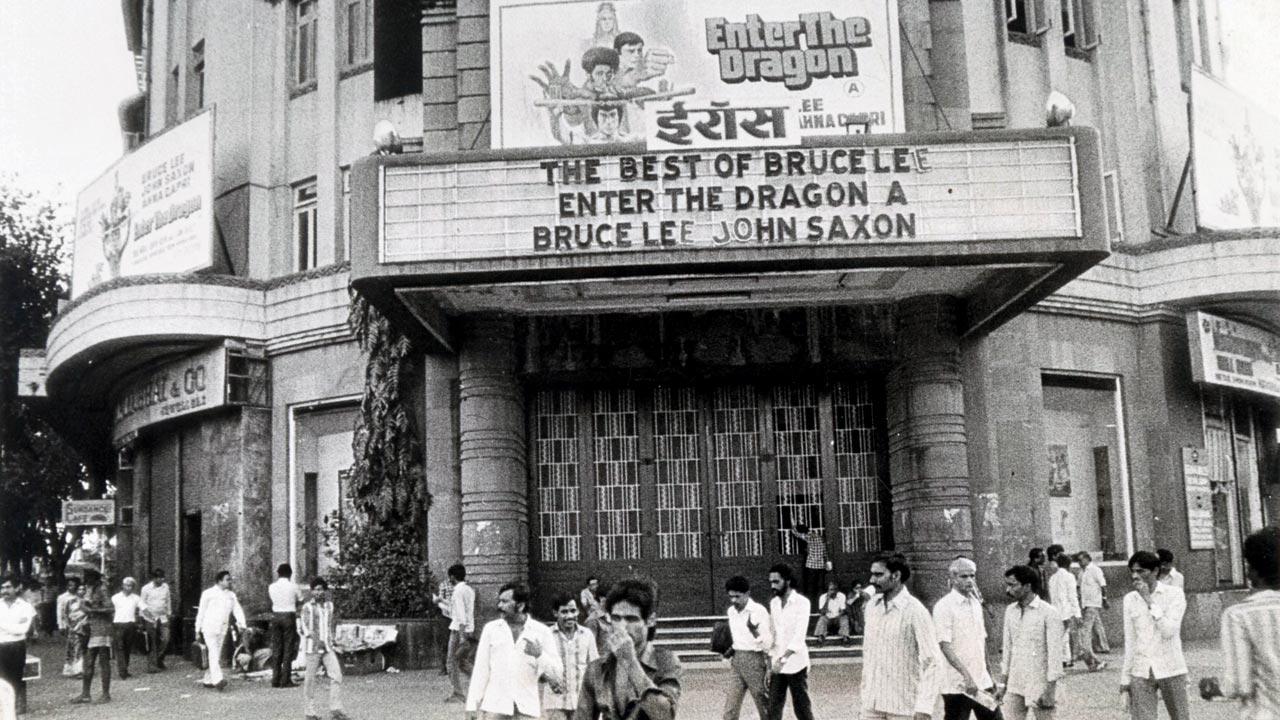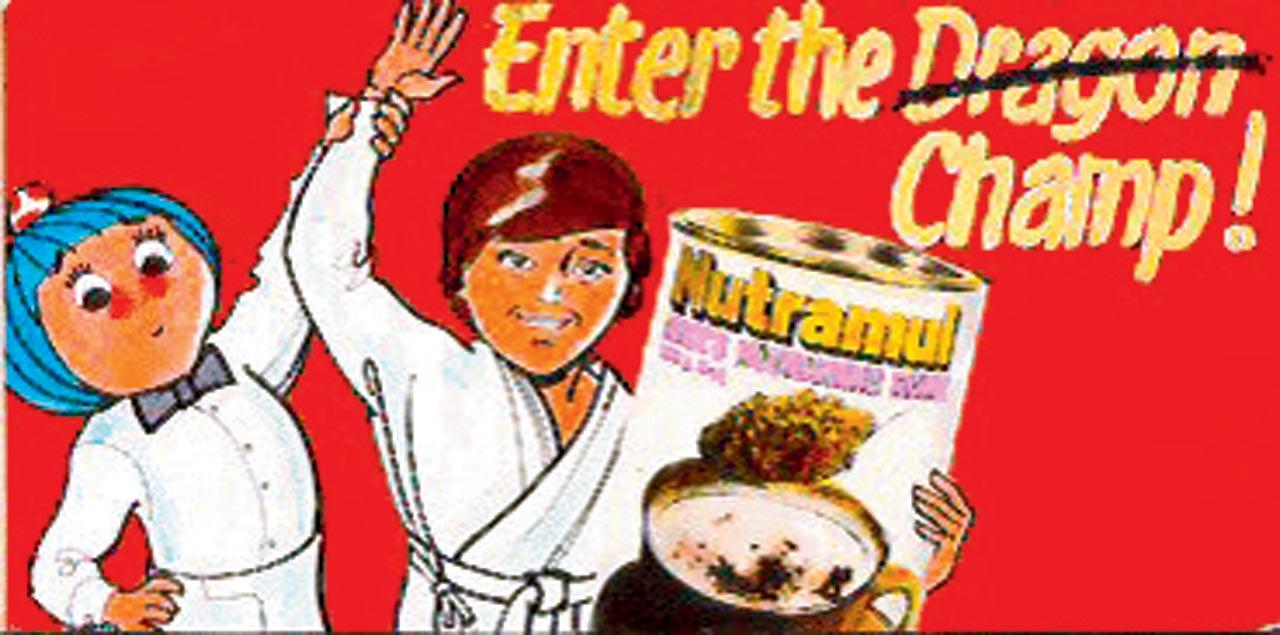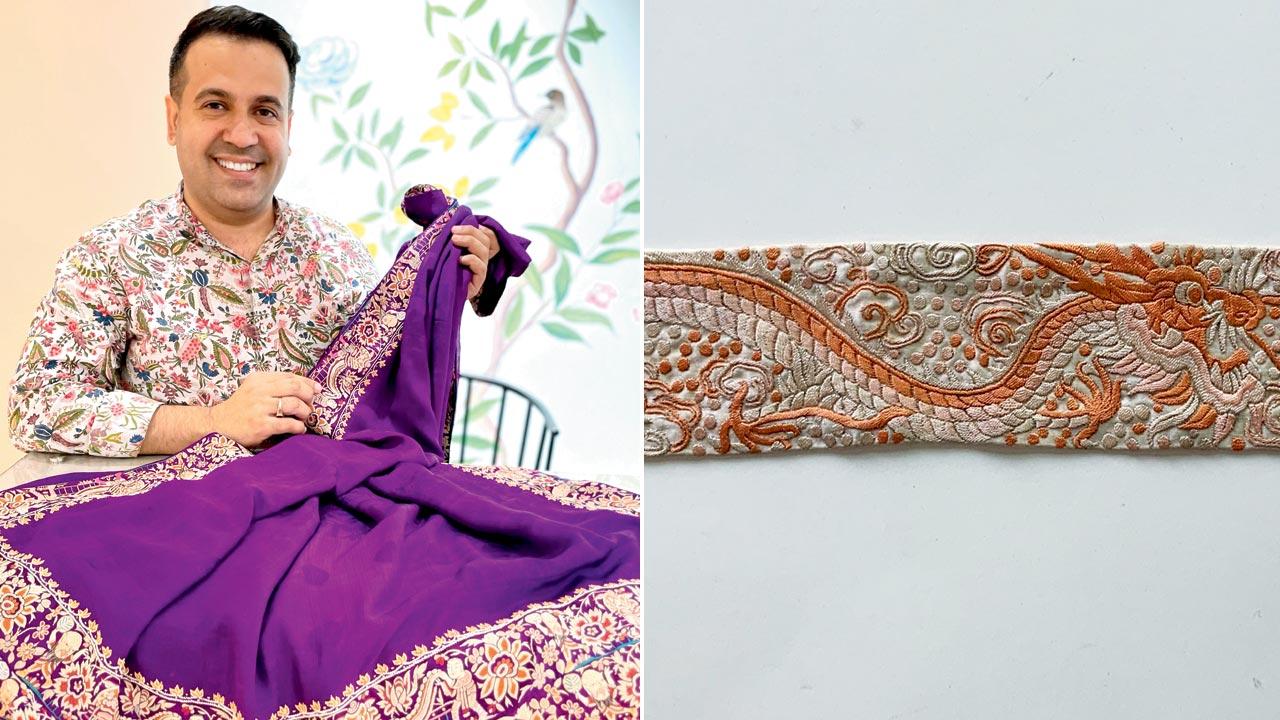The Chinese calendar declares 2024 as the Year of the Dragon. In Bombay, the mythical creature has always implied wide-ranging connotations

The Chinese Temple at Mazgaon, said to be the only remaining shrine of its kind in western India. This is where the community celebrates special occasions, like the Chinese New Year, with dragon dances under dragon lanterns. File pic
 In less than 24 hours, 2024 will dawn. Soon after, the turn of the Chinese calendar around February 10—the community’s New Year—will usher in the dramatic Year of the Dragon.
In less than 24 hours, 2024 will dawn. Soon after, the turn of the Chinese calendar around February 10—the community’s New Year—will usher in the dramatic Year of the Dragon.
ADVERTISEMENT
The Orient, of course, has long immortalised this four-legged, winged serpentine character in its storehouse of legend and lore. While traditional and popular culture in the West typically portray dragons as evil, in China they are viewed as benevolent, friendly harbingers of good luck. Sage and compassionate with active yang energy, they protect in uncommon ways, displaying intelligence and loyalty.

Interestingly, the Chinese identify nine types of dragons: Bixi, Qiuniu, Yazi, Chaofeng, Pulao, Chiwen, Bi’an, Suanni, and Fuxi. Their images found on everyday rooftops and ubiquitous bell handles, these “nine sons” (in 2012, the Shanghai Mint issued a set of ten silver and copper coins stamped with their impression; the tenth being the dragon father) are assigned different personalities and features—each governing certain fortunes—besides wielding great influence over weather and water.
A little slice of China in Mumbai offers fine local glimpses of the dragon. Having served in the Indian Navy–as chief engineer of INS Mumbai and first Captain Superintendent of the ship repair yard at Karwar–as well as the Mazgaon Dock for 25 years, Captain Ramesh Babu documents evolutionary centuries of this harbour in his book, My Own Mazagon: The history of a little island in the Bombay archipelago. He says, “Once a vibrant Chinese settlement, the lanes near Mazgaon Dock are now lined with empty apartments bearing Chinese names and a temple where the few Chinese left in Mumbai gather with dragon dances and dragon lanterns to celebrate their New Year.”
 Eros, at Churchgate, where Enter the Dragon released to packed audiences; the inimitable Amul ad from 1976, capturing the popularity of the cult film. Pic courtesy www.amul.com
Eros, at Churchgate, where Enter the Dragon released to packed audiences; the inimitable Amul ad from 1976, capturing the popularity of the cult film. Pic courtesy www.amul.com
Urban historians generally hold that the Chinese first made a presence in Mazgaon as dock workers only in the early part of the 20th century. This understanding is based on the date of construction of the Chinese temple (1919), where surviving families continue to worship.
“But from old newspaper reports I discovered that the Chinese were here almost 40 years before, building ships at the docks,” says Ramesh Babu. “Growing in numbers to establish an entire Chinese colony nearby, they made a definite contribution to Mazgaon’s history. Apartments near their temple, once the sought-after place for prayers, witnessed a vibrant Chinese colony living in harmony with Kolis, East Indians, Pathans and Parsis. Sadly, most have gone, leaving a handful of families and idols to revere at the temple. Empty homes around stand as silent sentinels of an ethos the precinct seems to have lost forever. The notes of Mandarin and Cantonese music may soon die. One wonders what will happen to these homes and the Chinese temple, as the dwindling community goes extinct with time.”
 Ashdeen Lilaowala with a saree woven with an extremely fine khakha, or Peking knot border, which depicts children playing with a dragon toy. Images belong to Ashdeen Lilaowala; (right) A rare dragon motif “kor”, most likely commissioned specifying this unique colour
Ashdeen Lilaowala with a saree woven with an extremely fine khakha, or Peking knot border, which depicts children playing with a dragon toy. Images belong to Ashdeen Lilaowala; (right) A rare dragon motif “kor”, most likely commissioned specifying this unique colour
Made memorable in theatre, cinema and fantasy roleplay games like Dungeons and Dragons, the figure has extended contextually to runaway hits like Enter the Dragon, the definitive martial arts movie whose 50th anniversary has been marked with well-attended global screenings.
Wowing Bombay audiences with an opening four years after its Hollywood launch on August 17, 1973, Enter the Dragon became one of the highest grossers, amid stiff competition from American Graffiti, The Sting and The Exorcist. Bruce Lee’s Chinese stage moniker gave the film its name. It translated as Lee the Little Dragon, for the fact that he was born in both the hour and the year of the Dragon by the Chinese zodiac.
Speaking to Esquire magazine for its August 2023 edition, Lee’s daughter Shannon shared that she is convinced her father’s performance is timeless in that decade’s abundance of funky kitsch. “He still electrifies and jumps off the screen, and is just so badass,” she said. Ironically, Lee never had a chance to revel in the impact of Enter the Dragon because he succumbed to a cerebral edema at a tragically young age—32, just before its original Hong Kong release.
I got roped into the frenzied adulation for the action flick through my fanboy elder brother, who stood for brave hours in unending ticket queues outside Eros. On watching the super-successful spy drama about the secret agent infiltrating a martial arts contest on an exotic island to confront a criminal mastermind, my usually self-contained sibling became a devoted part of the coterie expressing mass hysteria.
The film stirred him enough to enrol promptly for classes with pioneer karate exponent, Sensei Pervez Mistry. Returning from Kyoto in 1969 as India’s first qualified Black Belt instructor, Mistry taught and graded Karate-do under the auspices of the Seibukan Academy of Japan.
Sold into Lee’s cult following, the brother struck trademark poses, attempted nunchuck moves slicing the air against fictitious attackers, and initiated animated discussions assessing these at our dining table. Hoping to get me to learn karate as self-defence, he even generously bought me a kung fu warrior T-shirt with limited, carefully collected pocket money.
As with anything hidden coming to light gradually, it is with some excitement that we greet the occasional inclusion of the dragon motif in Parsi “gara” hand-embroidered textiles. Any lagan or navjote celebration in the city displays these sarees inspired by centuries of Oriental-meets-Persian craftsmanship. And yet, one of the gara’s popular landscapes–the “cheena cheeni” style, depicting men and women engaged in daily chores against a backdrop of bridges, pagodas and plantations–is seldom adorned with dragons. Who better to elaborate on this aspect as significantly than Ashdeen Lilaowala, widely feted for reviving the beauty of this ancient skill?
“Known as loong, long or lung, the dragon in Chinese mythology associates the imaginary creature with the divine powers it possesses,” says Lilaowala. “Loved and respected as the highest symbol of luck and auspiciousness, the dragon appeared on the imperial robes worn by Chinese emperors and the royal family.”
The colour of the robe would signify the rank of its wearer: for instance, yellow was reserved for the emperor and empress, the crown prince wore apricot. In textiles, the dragon motif often appears surrounded by clouds, to suggest perennial youth.
“The Parsi Gara tradition is an amalgamation of Indian, Persian, Chinese and other Far Eastern textile traditions. The influence of Chinese textiles, especially, as we know, is quite significant in terms of motifs, compositions and embroidery techniques. My research and collection over the years reveals that the dragon motif occurs very rarely in the Parsi Gara textiles, making it highly prized. I have seen it used in the form of unique borders or ‘kors’. The motif has carved a special niche for itself in the Parsi Gara lexicon, among fantastical creatures like phoenixes and the divine fungus.”
Dragons with a difference continue to entertain and educate children through stories (adults too, IMHO, charmed by plenty of what I used to read aloud to my own kids). This feeling is familiar for those of us who chose to read feminist tales, which smashed patriarchal tropes of swooning or screaming damsels in distress. Both my son and daughter particularly enjoyed Manjula Padmanabhan’s self-illustrated Unprincess! and Bubla Basu’s spirited schooldays trilogy: It Happened that Year, Up to the Nines and On Top of the Tens.
There are several exceptional non-Indo English recommendations worth checking out. We like the sound of at least three titles guaranteed to please every generation of dragon fan.
Avoid being fooled by the deceptively pink cover of Princess Daisy and the Dragon and the Nincompoop Knights, by Steven Lenton. It actually unpacks a fun narrative of female pluck and a sweet dragon simply wanting a bedtime story. Despite knights of the realm proving utterly useless when faced with frightening roars from the dragon’s cave, an unfazed Daisy feistily rides in to save the kingdom–astride a cow and armed with a book instead of a sword.
The Adventures of Egg Box Dragon, by Watership Down author Richard Adams, is punctuated by the humorous adventures of a quirky, homemade dragon coming to life for his children. Mischievous Egg Box Dragon might breathe fiery holes in coats and frighten cats with his roar. But his talent for finding missing possessions catapults him to celebrity status and he is hailed a national treasure when the Queen loses a diamond from her crown.
Zog, by Julia Donaldson and Axel Scheffler, has this eponymous dragon work hard to master vital life lessons his species really must: knowing how to fly over enchanted lands, emit fearsome roars, breathe flames of fire and, ultimately, capture a princess. Try as he might, there is no winning a gold star for him. Not until the eager student encounters remarkable Princess Pearl, who would rather be a doctor than be boringly rescued by a knight. The spot-on rhyming text renders this accident-prone “hero” more endearing.
It may be worthwhile searching for dragons in the city, or allusions to them—traditional or contemporary. Those that we think are them, are sometimes not—exemplified in the VT neighbourhood by the gargoyles overlooking the St Xavier’s College quadrangle, or the griffins on the BMC building. Onward with the dragon hunt then...
Author-publisher Meher Marfatia writes fortnightly on everything that makes her love Mumbai and adore Bombay. You can reach her at meher.marfatia@mid-day.com/www.meher marfatia.com
 Subscribe today by clicking the link and stay updated with the latest news!" Click here!
Subscribe today by clicking the link and stay updated with the latest news!" Click here!







